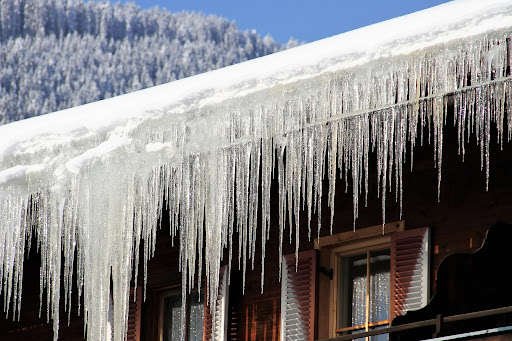In most parts of the United States, severe weather is a fact of life. From high winds to heavy rains, extreme weather can cause serious damage to your home.

Your roof is especially vulnerable, and if it’s not properly protected, you could end up with expensive repairs or even a new roof. Here are some common weather-related issues and how to deal with them.
Ice Dams
If you’ve had problems with ice dams in the past, you’ll want to take precautions during cold weather. Ice dams happen when heat comes through your roof and melts snow on the edge before it can completely slide off. If another layer of snow blocks the melted water, it will turn back into ice and cause an ice dam.
Ice dams are more likely to form when your home’s exterior gauge temperature is between 18 and 25 degrees Fahrenheit. They’re also more common on northern-facing homes, where the afternoon sun has little effect during winter months.
You can deal with an ice dam by covering the edges of your roof with heat cables and wrapping them around any sharp corners. You can also make sure that there’s a space under the insulation in your attic to allow warm air to flow through.
Condensation
Another weather-related issue is condensation, which usually happens in houses that get a lot of sun. Condensation occurs when warm air gets trapped by the roof and cools quickly, causing water vapor to collect on the surface.
Condensation isn’t usually dangerous; in fact, it can be beneficial since it helps keep your roof damp-free. However, it can make wood rot or allow moss to grow on shingles, which will cause problems down the road.
To prevent condensation, ensure there’s enough ventilation in your attic by installing perforated soffit vents and ridge vents.
Flashing Leaks
Leaks around your chimney and skylights are also common, and they’re often caused by flashing issues. Flashing is a thin strip of metal that’s used to cover gaps between things like the roofing and chimneys. It usually goes beneath shingles or other materials to not be seen from the ground.
If you find that your flashing needs replacement, make sure you replace it with the same material. Replacing your flashing with a different type of metal can create leaks elsewhere.
Don’t try to repair worn-out flashing yourself; instead, hire an experienced roofer like those at the roofing company in Northwest Houston. The pros know all the tricks of the trade, and they’ll be able to fix the issue quickly.
Icicles
If you live in an area where the winter months are especially cold, your roof will likely accumulate icicles. Icicles can be beautiful to look at, but they may also tell you that there are problems with the gutters.
If water is pooling on the edges, the chances are good that it’s freezing before it hits the ground.
There are a couple of things you can do to prevent this problem. First, make sure you completely clear your gutters before winter begins so they won’t be blocked by ice or snow, and install heat cables along the edge to prevent water from freezing.
Strong Winds
You may not realize it, but high winds can cause quite a bit of damage. If you live in an area that experiences powerful hurricanes or tornadoes, you’ll want to take special precautions to protect the surface during extreme weather.
One of the most important things you can do is make sure your roof is properly attached to the house and that your shingles aren’t damaged. You’ll also need to ensure the connection between the roof and gutter is secure since this area will experience a lot of stress during strong winds.





